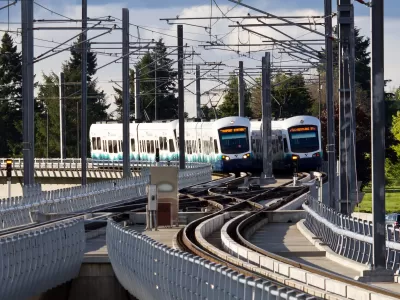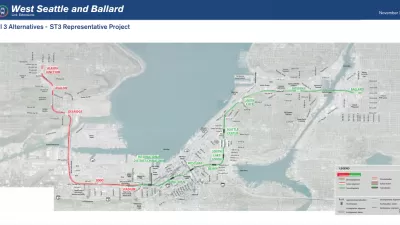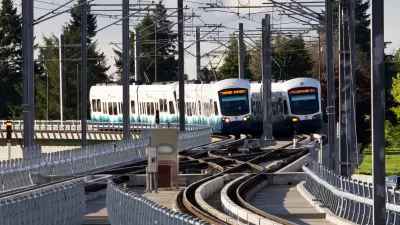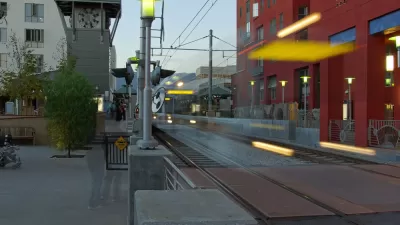Land values and construction costs have increased since voters approved the Sound Transit 3 ballot initiative.

"Cost estimates for extending Sound Transit light rail to both Ballard and West Seattle have risen by about $5 billion," reports Michelle Baruchman. That increase amounts to 50 percent of the previously estimated cost of extending light rail on either end of the Sound Transit system.
Another light rail project, between Federal Way and the Tacoma Dome, has also increased dramatically, according to Baruchman.
"Sound Transit blames the higher costs primarily on rising real estate prices in densely developed areas where projects would be built, and a hot construction market that has pushed prices higher than expected — even during the pandemic," according to Baruchman. The price of the projects has increased along with the price of land since voters approved the $54 billion Sound Transit 3 ballot measure in 2015.
The rising costs estimates will require Sound Transit to make final decisions on construction during the final environmental impact statement process. Sound transit spokesperson Geoff Patrick is paraphrased in the article as saying "actual projected costs will become more clear as projects advance to around 60% of the final design."
FULL STORY: Cost of building light rail to West Seattle, Ballard is much higher than first estimated

Maui's Vacation Rental Debate Turns Ugly
Verbal attacks, misinformation campaigns and fistfights plague a high-stakes debate to convert thousands of vacation rentals into long-term housing.

Planetizen Federal Action Tracker
A weekly monitor of how Trump’s orders and actions are impacting planners and planning in America.

In Urban Planning, AI Prompting Could be the New Design Thinking
Creativity has long been key to great urban design. What if we see AI as our new creative partner?

King County Supportive Housing Program Offers Hope for Unhoused Residents
The county is taking a ‘Housing First’ approach that prioritizes getting people into housing, then offering wraparound supportive services.

Researchers Use AI to Get Clearer Picture of US Housing
Analysts are using artificial intelligence to supercharge their research by allowing them to comb through data faster. Though these AI tools can be error prone, they save time and housing researchers are optimistic about the future.

Making Shared Micromobility More Inclusive
Cities and shared mobility system operators can do more to include people with disabilities in planning and operations, per a new report.
Urban Design for Planners 1: Software Tools
This six-course series explores essential urban design concepts using open source software and equips planners with the tools they need to participate fully in the urban design process.
Planning for Universal Design
Learn the tools for implementing Universal Design in planning regulations.
planning NEXT
Appalachian Highlands Housing Partners
Mpact (founded as Rail~Volution)
City of Camden Redevelopment Agency
City of Astoria
City of Portland
City of Laramie





























